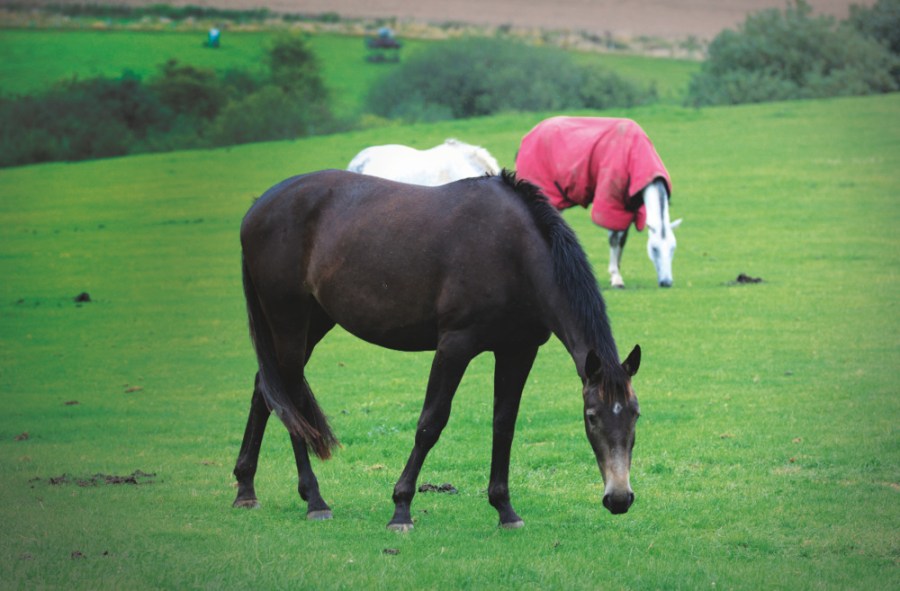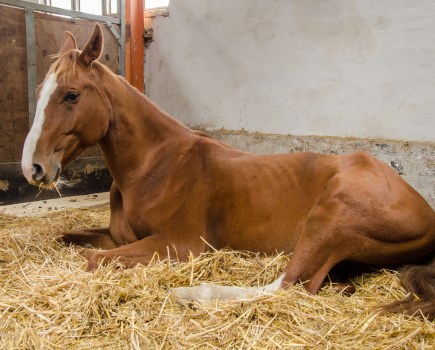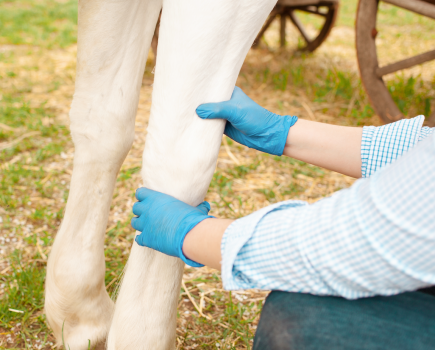Winter loss or gain, scraggly coats and brittle feet — winter certainly takes its toll on our horses’ health. BEVA President Lucy Grieve, an ambulatory vet at Rossdales in Newmarket, explains how to ensure your horse’s waistline is healthy and an appropriate size as we head into spring.
1. Weight matters
One of the first things that some people notice coming out of winter is that their horse has lost weight, but it’s really important that owners acknowledge that a degree of natural weight loss and gain throughout the year is perfectly acceptable in a healthy horse.
They are designed to lose some weight over winter, and it is a really good opportunity for overweight horses to lose a few pounds in the most natural way possible. On the flip side, thin horses need to maintain their weight through winter, so it’s about tailoring to the individual needs of the animal.
2. Signs he’s struggling
There are ways to tell whether your horse has come out of winter well or not:
- Horses who perhaps haven’t come out of winter well may have noticeably lost weight and condition.
- There can be a lack of muscle and topline, the hindquarters may appear angular, the spine may be prominent or the ribs more so than they should be (a healthy horse can show its ribs so it’s not always a sign of being too thin).
- Or there may be a lack of neck muscle with an overly prominent nuchal ligament. This is the ligament that runs along the top of the neck, from poll to withers.
- A poor horse will have a starey, dull, dandruffy coat as opposed to a clean, shiny winter coat.
- The horse’s energy levels may be low, and they can look tired and depressed.
- Also look out for general stiffness, such as in older horses with osteoarthritis. These horses may be stiff when being led out of the box in the morning.
3. Correcting weight loss through nutrition
Ruling out concerning causes and assuming all else is fine, you can bring a poor horse back to health through good nutrition and appropriate rugging. The spring grass flush will add nutrition to the diet, and if you want to provide more calories for your horse, always increase forage first, alongside a balancer, before considering adding hard feeds.
Then consider an endurance cube or conditioning feed, which are a good way of feeding up horses who need condition but not energy. They are oil-based instead of grain- and carbohydrate-based, providing slow-release energy so you get condition and stamina without the fizz.
If you are still struggling to improve a horse’s condition, consider asking your vet to do a health check as there may be an underlying condition.
4. Signs he’s doing too well
The first obvious sign that a horse has done too well is excess fat in the form of fat pads, usually visible over the crest and rump. The belly can look ‘heavy’ from excess intra-abdominal fat. Apart from raising the risk of metabolic conditions, excess fat makes it harder to get fit for spring and summer riding and competing. In an overweight horse, more pressure will be exerted on the joints and soft tissues during exercise than if he is lighter. Without excess weight, your horse has a healthier blank canvas on which to build muscle and fitness.
5. How to encourage weight loss
Extra weight should come off before the first flush of spring grass, which could bring on laminitis. Ideally, shed some fat before putting them on the spring grass.
To do this, increase their exercise and cut back on hard feed or remove entirely, feeding a balancer only, while soaking hay, using a small-holed haynet to slow the speed of intake, and restricting grazing. You could also clip the horse one last time and minimise rugs, to increase weight loss through heat production.
When starting ridden fitness, take it easier with fatter horses, because their joints are carrying more weight. Build it up gradually: fast work is concussive so ride for longer at a lower speed rather than introducing lots of jumping or fast work too soon.
Frequency of riding is also important. Riding solely at the weekend or twice a week isn’t going to achieve what you need — a horse needs to be ridden most days to get the metabolic rate up. Consider sharing your horse or asking someone else to ride if you struggle for time in winter.
6. Other important checks
As well as weight and condition, the following health checks are vital too:
- Hoof hygiene — wet and muddy winter conditions mean thrush and poor hoof horn quality. Cleaning feet thoroughly every day and using hoof hardeners and thrush treatments will really help. I use a one-part iodine solution to two-part surgical spirit in a spray bottle. It is a good antiseptic and dehydrating solution that hardens, dries out and kills all the nasties that attack the hoof horn tubules, and is a really good daily treatment to use on horses who struggle with thrush and hoof horn quality.
- Foot balance is also important, so speak to your farrier if you have any concerns, especially if your horse is barefoot.
- Vaccination — The end of winter is a good time of year to think about vaccinations — flu and tetanus being the main ones — and getting them done in time for the coming competition season.
- Following a suitable egg-counting and worming programme is vital. Wormer resistance is a problem, and new research recently proved that frequent worming is unnecessary and diagnostic testing is a much better approach. Speak to your vet.









